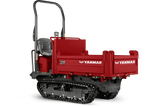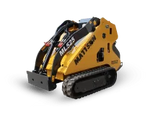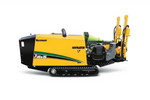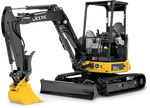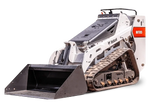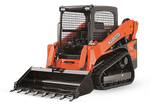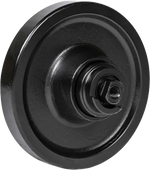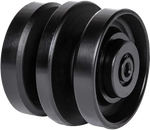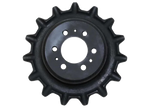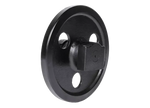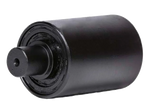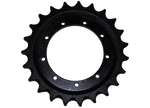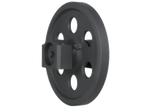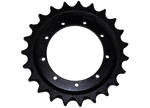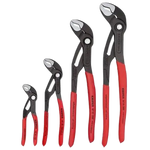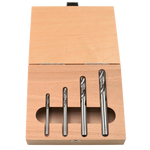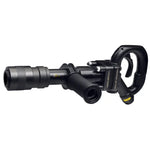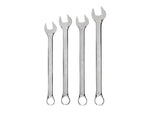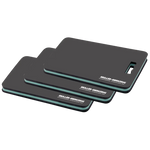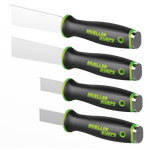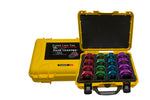From Wheels to Treads – The Crucial Role of Rubber Tracks in Skid Steer Applications
Written by Luis Montes Updated On June 12, 2024

Wheeled skid steers are efficient in ideal conditions. By ideal conditions, we refer to sunny, dry weather and a flat, hard surface—asphalt or concrete.
However, wheels lose effectiveness on uneven or soft terrain, slippery surfaces, or rainy weather.
The reason for the loss of efficiency is the wheel’s small contact area with the ground:
- Water, mud, or snow significantly reduces its already small friction capacity.
- It produces high pressure on the ground (pressure = weight/area), making skid steers sink on loose ground or damaging delicate surfaces.
On the other hand, the larger area of contact of skid steer rubber tracks spreads the load more, maximizing grip and offering flotation.
But skid steer tracks are more than just a large rubber band.
Let’s briefly cover how their design and manufacturing are crucial in skid steer applications and discuss their lifespan, wear-off signs, and maintenance.
Skid Steer Tracks vs Tires

Besides their superior traction and flotation, CTL rubber tracks help you to get rid of flat tires.
Solid tires won’t go flat, either. However, they don’t cushion machinery as well as pneumatic tires, have less traction, can consume more fuel because they are harder to roll, and are more expensive.
Consider two similar skid steers: the Kubota SSV75 and SVL75-2. Four solid tires for the Kubota SSV75 may cost between $3,000 and $5,000, whereas a set of rubber tracks for the Kubota SVL75-2 costs around $2,800.
Don’t get us wrong. We aren’t discarding solid tires. They have suitable applications, such as working with a wheeled skid steer in a demolition project with lots of sharp debris where a flat tire isn’t an option.
OTT tracks (Over the Tire Tracks) offer an effective solution to use wheeled skid steers on muddy, slippery, and soft terrain. OTT tracks (rubber or steel) go over your skid steer’s tires, improving traction, flotation, and stability.
Still, rubber tracks are more effective than OTT tracks because tracked undercarriages are designed to generate traction and efficiently transmit it to the ground. Our article “A Closer Look: Skid Steer vs Track Loader Face-Off” explains the performance differences between wheeled and tracked skid steers.
In addition to being part of a dedicated undercarriage system, rubber tracks have internal steel embeds and cables bonded to a rubber compound engineered to withstand harsh conditions.
To learn more about the role of each component and how they work together to ensure rubber track durability, check our article “What are Skid Steer Tracks?”

What Is The Average Life Of Skid Steer Tracks?
The general rule is that rubber tracks last between 1,200 and 1,600 operating hours. However, this depends greatly on the ground conditions in which your heavy equipment operates.
If you plan on using your heavy equipment on sharp or rocky terrain, it’s more likely to rip your rubber tracks and decrease their lifespan.
How to Identify Bad Skid Steer Tracks

When inspecting a skid steer rubber track for signs of wear, some easy to spot are low height or missing lugs. Refer to your tracks’ specifications for unsafe tread depth checking values.
Shallow rubber track tread depth fails to ensure sufficient traction and performance, especially on difficult terrain.
Look for exterior track damage, like cuts, tears, exposed cords, and missing drive links.
When track tears or cuts are not spotted promptly, they worsen over time, damaging adjacent track sections.
A missing drive link disrupts the even distribution of tension across the steel tracks, leading to uneven wear and potentially affecting the track’s alignment.
In addition to visual inspections, listen for unusual noises or pay attention to excessive vibrations while operating the equipment. Such signs usually indicate problems with the track tension (insufficient or excessive), rollers, or other undercarriage components.
How to Identify Bad Skid Steer Tracks

Regular inspections, thorough cleaning, and proper operating techniques are the primary measures for maintaining rubber tracks in good condition and thus extending their lifespan.
Inspect the rubber track’s underside for stress marks, wear, or abnormalities, such as low tread depth, cuts, and uneven wear due to misalignment.
Use air guns and pressure washers to clean the tracks, especially in dusty, sandy environments, muddy terrains, and snow.
Excessive sand and pebbles between the track and rollers will cause abrasion and excessive wear, while mud and snow shouldn’t be an issue unless you let them dry and harden, which can greatly increase the chances of track derailment.
How much mud can a rubber track skid steer handle? Virtually whatever amount it encounters, as long as it has the right tread pattern. Just clean off the mud at the end of the shift.
Avoid overloading and operating equipment on rocky or highly rough terrain whenever possible. Don’t brake aggressively, limit excessive speed, and turn in a controlled manner. Also, choose a suitable surface to minimize track twisting and potential damage.
Store the equipment in a dry and covered area when parking, at shift end, or during the off-season. Prolonged exposure to direct sunlight, cold weather, and moisture damages rubber compounds in several ways, impacting traction, flexibility, and shape.
One last thing. Some people tend to add excessive tension to their tracks, which is wrong. Track manufacturers recommend 1 to 2 inches of slack between the bottom rollers and the track.
How Often Should I Replace Skid Loader Rubber Tracks

In addition to visible wear and tear, like cuts and missing lugs, reduced performance and excessive track stretching indicate that you must replace your rubber tracks ASAP.
Tracks with shallow tread depth will slip excessively. Worn-out rubber tracks may also experience elongation because the internal bonging no longer works, leading to uneven tension and alignment problems. If adjustments cannot restore proper tension, replace the tracks.
Final Thoughts
Tires have their niche: dry, flat, and hard surfaces. Outside of that, skid steer rubber tracks prevail. They have better traction and offer flotation and stability.
In addition, the inner components of CTL rubber tracks significantly improve their durability.
Nonetheless, based on the job site conditions and the operator’s driving techniques, rubber tracks can wear faster than the lifespan offered by most manufacturers—1,200 and 1,600 operating hours.
Frequent inspection and maintenance are vital to extending the useful life of rubber tracks, but beyond that, consider purchasing premium rubber tracks, which are a worthy investment in the long run.





